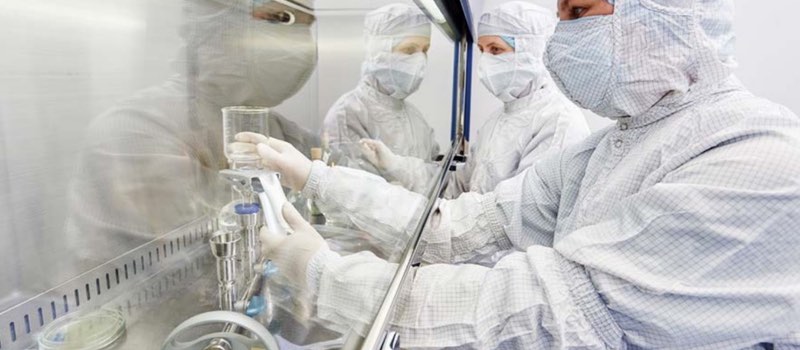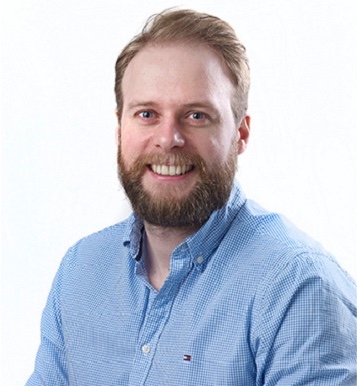The challenges in sterile products manufacturing are complex to grasp but are critical to the success of the end product. Hamish Hogg, Microbiology Product Specialist at Cherwell Laboratories, gives his take on the highlights from the one-day conference hosted by Pharmaceutical & Healthcare Sciences Society (PHSS) near Liverpool last month.
Regulatory and GMP audit
The latest on the update to the EU GMP Annex 1 was covered by Phil Rose, Senior Inspector from the MHRA. He pointed out that the ANSM in France is the new rapporteur, and that work continues with MHRA representation, and that draft 9 imminent.
Rose discussed the deficiencies found in the industry (sterile and non-sterile) and that there were QRM issues across a number of sites. Some of the MHRA observations on site ranged from interesting problems to the downright absurd, considering where we are in the pharma industry today. For example, Ross said he saw an operator eating in a cleanroom environment!
Sites needed to show the ability to identify risk and assess the risk appropriately, not blindly following RPN (Risk Priority Number) scoring, but addressing the risk sensibly with an approach that applies the best control measures.
Labs should identify assess the risk appropriately, not blindly following RPN (Risk Priority Number) scoring
Rose looked at autoclave processes, media fills, EM and airflow and the deficiencies observed and provided advice on how to approach and rectify the issue, identifying smoke studies as a particularly useful tool.
Slow reaction times to alert limits were also observed. With some cases taking up to two years to determine the root cause and implement a CAPA. There were companies performing ‘Sat Nav’ investigations, already believing what has caused the issue and the investigation leading to that determination, rather than using a non-biased approach.
A constant with these deficiencies was the lack of knowledge and experience. Which led to the question: how do you retain this knowledge in the pharma industry to allow it to be drawn on to implement the best processes?
Rose did insist that these examples were all rare exceptions and that in general quality and safety are well controlled across the pharmaceutical industry.
The overall message was that QRM in pharma facilities needs to assess the process; compare the controls in place; add any additional control measures; involve the right people to work on the QRM; make sure it is a part of your quality system and then review the strategy at a later date to ensure it is still current.

Image from event brochure
Rose also briefly talked about the implementation and striving for the innovation of new technologies used in the industry, which is hard to implement in an industry that has a fear of regulators and concerns on validation. The MHRA is not averse to the use of new methods and technologies. Rose is even a part of the MHRA innovations office, who can be approached on novel implementations and how they stand with the regulators, to encourage and aid movement towards the use of new technologies.
Product manufacturing and aseptic processing
The new facility under construction in Oxford for Oxford Biomedica was the focus of Melanie Bull's presentation. She works at the biotech company as Director of Oxbox and Fill Finish Operations.
Bull talked about outlining the rationale for operation, designing the HVAC system, room classification and the flow of material and resource. This was a great lead on from Rose, as Oxford Biomedica has incorporated new isolator technology to the filling lines; a built-in QC lab and having a suite design that allows for a partial shutdown of operations while other parts of the facility can remain functional, and thus providing flexibility for manufacture depending on the end product.
QRM has been in place since the design, but novel problems appear that require a thought-out process, for instance, challenges in working with a closed system, in relation to operators for necessary access and EM.
Providing flexibility for manufacture depending on the end product
Although the company has introduced new technology, the traditional methodology is still being used for EM, and prompting the question of whether to implement any rapid micro testing methods. Bull said it is something that Oxford Biomedica is looking at for the future—the design and construction of the facility needed quick EM implementation. The Chair of the PHSS made a statement of ‘new rapid methods as they come through need the building and capture of data to aid their implementation for the future’.
Lessons learned in QA audits and GMP compliance
Speaking at the conference, Andrew Hopkins—the former MHRA advisor who dealt with Annex 1—shared his point of view from both DARK sides of pharma to sterile manufacturing. Hopkins is now working for Abbvie as Quality and Compliance Director. He pointed out that everything that is done and put in place to produce a sterile product is done so for ensuring patient safety. For Hopkins, that there is a patient at the end of the process should always be a present thought.
Pharma is slow to change, especially if a new facility has a short time frame to be productive and fear of regulators
Hopkins also underlined areas such as knowledge management, reflecting on that lack or loss of knowledge and experience and how to capture this information that was reflected in the 1st presentation. The pharma industry needs to have knowledge retention, but also to share and develop that knowledge outside of each site or company to improve the industry. Not only to share knowledge and experienced issues within the industry but to work with suppliers as well.
He led on to that if knowledge management is a concern, then there is a need for training systems to pass on that knowledge. The suggestion was the potential for future bespoke college courses, the use of YouTube videos and even VR (virtual reality) training. Currently, regulators and Pharmig do provide readily available training packages, including information on the PIC/S forum sharing information.
Hopkins went into the use of new technology and how even though you can be against it, it is a requirement to look at new technology for your facility as part of GMP and the EU Directives. Pharma is slow to change, especially if a new facility has a short time frame to be productive and fear of regulators as previously mentioned by Rose and Bull.
But why push on progressing new methods in the industry? It allows for a more consistent process, easy to operate, lowers incidents and excursions, less monitoring and fewer rejections, fewer stock-outs, less regular scrutiny and yes there is a financial benefit, but Hopkins referred to his constant which is it would lower the possibility of patient harm.
What followed was a presentation from Prof C William Keevil on the topic of viable but non-culturable biocontamination (VBNC). The research has come from the biofilm initiative with Southampton University.
Research looking at how to determine what is present in clean environments and if it is viable
His research looked at how to determine what is present in clean environments and if it is viable. The team started with work surfaces that may look smooth, but under a powerful microscope there are crevices that hold bacteria that the cleaning agents may not be able to reach.

Hamish Hogg
Therefore, the methods used to identify and determine the viability of present organisms were numerous. Molecular methods were used to help identify small composites of bacteria, Live/Dead stain, CTC measuring respiration and resuscitation of organisms indicated by cell elongation. Many methods were used to aid investigations on VBNC.
In the case of molecular testing, viability cannot be determined. The Live/Dead stain worked by showing the integrity of membrane of organisms, therefore if the organism was alive the membrane would be intact and the stain would come up green and if the membrane was not intact due to deceased cells it would show up red. However there are occasions where the stain becomes yellow/orange, so the question was, what is this indicating?
Keevil performed several studies around this subject; one looking at the presence for bacteria in a cooling tower. The manufacturer could not grow bacteria on culture to indicate a viable organism present but it was identified using methods outlined by the professor above. The cooling tower was then properly sterilised and the organism and biofilm were eradicated.
There was also the use of copper surfaces that killed a number of VRE organisms proved by the Live/Dead stain and CTC, a potentially simple solution to keeping surfaces clean.
There was a study on the survival of Salmonella on spinach leaves rinsed in a chlorine solution that is 100ppm that did not show in traditional culture methods. By using the cell elongation method – that uses stain and microscopic observation to see if stressed cells elongate rather than divide to indicate viable organisms – it successfully identified viable organisms still present after being washed at 100ppm chlorine that induces VBNC biofilm of Salmonella.
Then the question is, are these VBNC’s infectious and a risk to health? There are many studies beyond what the professor has done into infection models, to show that VNBC’s are infectious. One free paper is into water research for Legionella.
A lot of the research was performed for other industries and not pharma, but this vital information can be then related to the pharmaceutical industry and how we detect, identify and control VBNC for the future.

